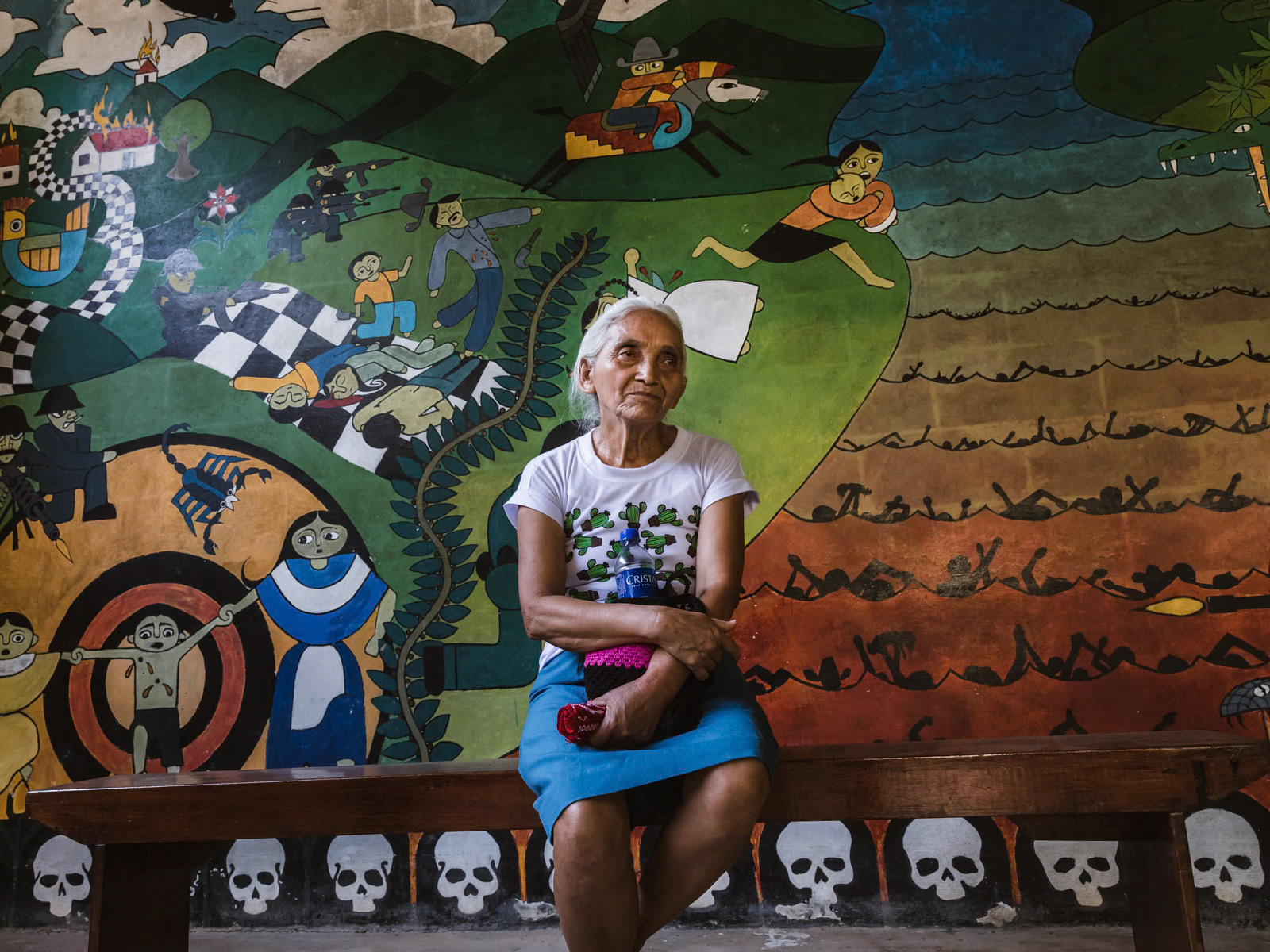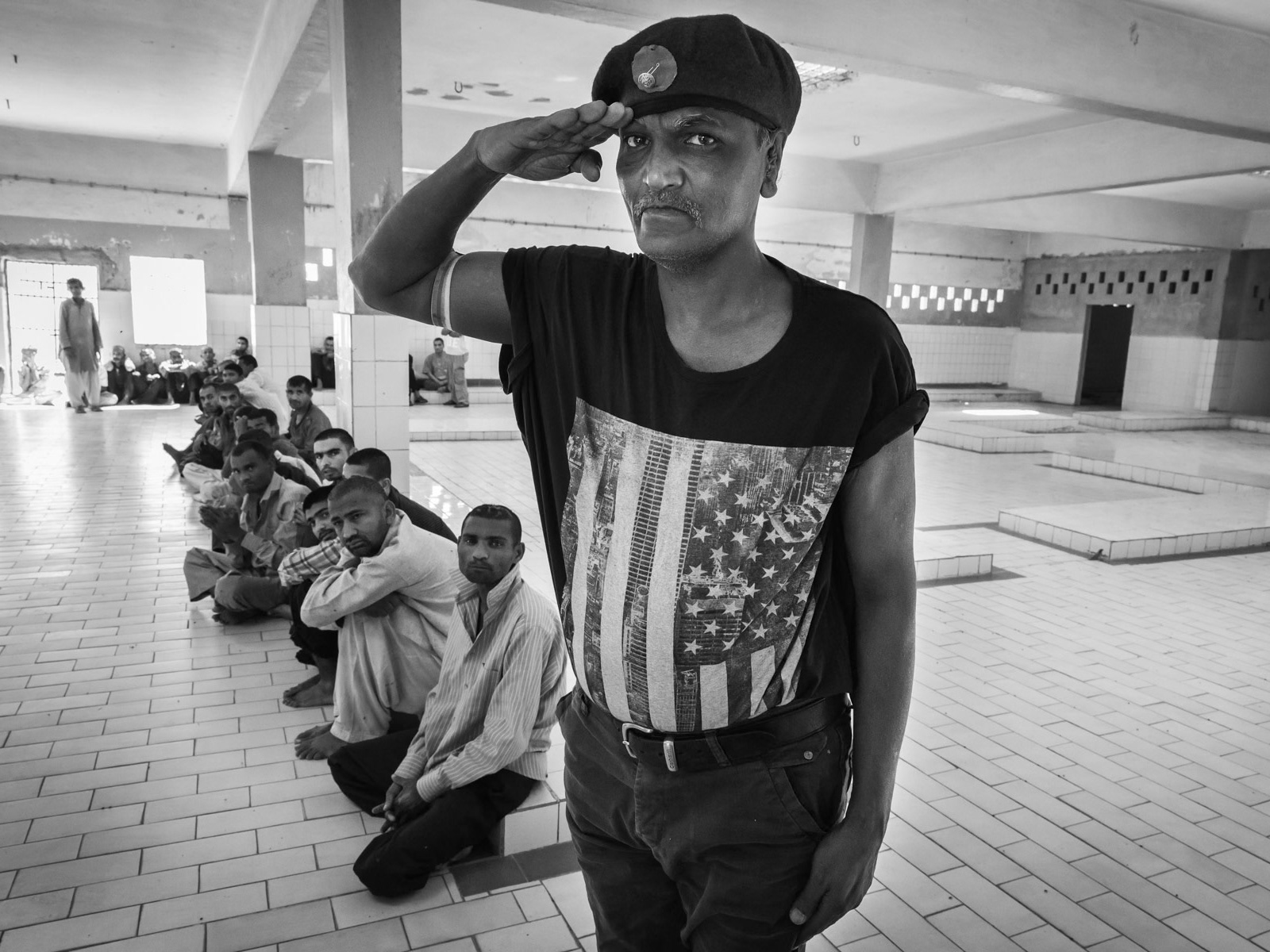In recent years, I have documented the suffering of the Rohingya Muslim minority, focusing on their plight in Myanmar's Rakhine region and Bangladesh. My aim is to highlight their loss of fundamental rights during violent ethnic cleansing campaigns, which have escalated into genocide under the guise of security operations by Myanmar's military.
The crisis began with an attack by the Arakan Rohingya Salvation Army (ARSA) on Myanmar police forces in October 2016. In response, Myanmar's forces launched a brutal retaliation against the Rohingya, forcing around 100,000 to flee to Bangladesh. This wave of violence included executions, village burnings, and mass rape, signs of ethnic cleansing. The situation worsened after a larger ARSA attack on 25 August 2017, prompting another “security operation” that led to the displacement of over 750,000 Rohingya refugees. Myanmar's forces perpetrated widespread killings, torture, and other atrocities, with Rakhine state remaining almost entirely closed off to media and humanitarian workers.
By now, fewer than half a million Rohingya remain in Rakhine, many living in confined camps, while those who fled face severe trauma and hardship in Bangladesh. Refugees, especially women and children, endure extreme vulnerability, including risk of trafficking, further abuse, and lack of protection. Despite efforts by humanitarian agencies, the conditions in the camps remain dire, with victims of violence struggling to recover from their horrific experiences.
As documenting the genocide within Myanmar itself is nearly impossible due to restricted access, it is crucial to gather testimonies from survivors and witnesses in Bangladesh. These accounts will play a vital role in prosecuting the perpetrators of these crimes against humanity. By sharing these stories, journalists, human rights activists, and photographers can counter the misinformation spread by Myanmar’s government, ensuring that the atrocities faced by the Rohingya are recognized and addressed.

Rohingya working as low paid daily labour for Bangladeshi fishing boat owners. The same boats have been used to smuggle desperate refugees towards international waters where bigger boats wait to transport them towards Thailand and Malaysia. Recently similar boats have been used to flee from Myanmar to Bangladesh. Shamplapur, Bangladesh, June 2015

Fences, barbed wire and watch towers are surrounding the refugee camps making it very hard to reach clinics, stores and commodities located outside the camps. After living for more than 5 years in limbo it is very unreal to see any perspective of returning to their homeland or being re-settled in a third country for the growing population of over one million Rohingya refugees. Kutupalong refugee camp, Cox's Bazar, Bangladesh, September 2022

Children playing at a makeshift refugee camp for un-registered Rohingya refugees from Myanmar. Before the renewed waves of ethnic cleansing of 2016 and 2017 more than 250,000 Rohingya refugees were already living in Bangladesh. Shamplapur, Bangladesh, June 2015
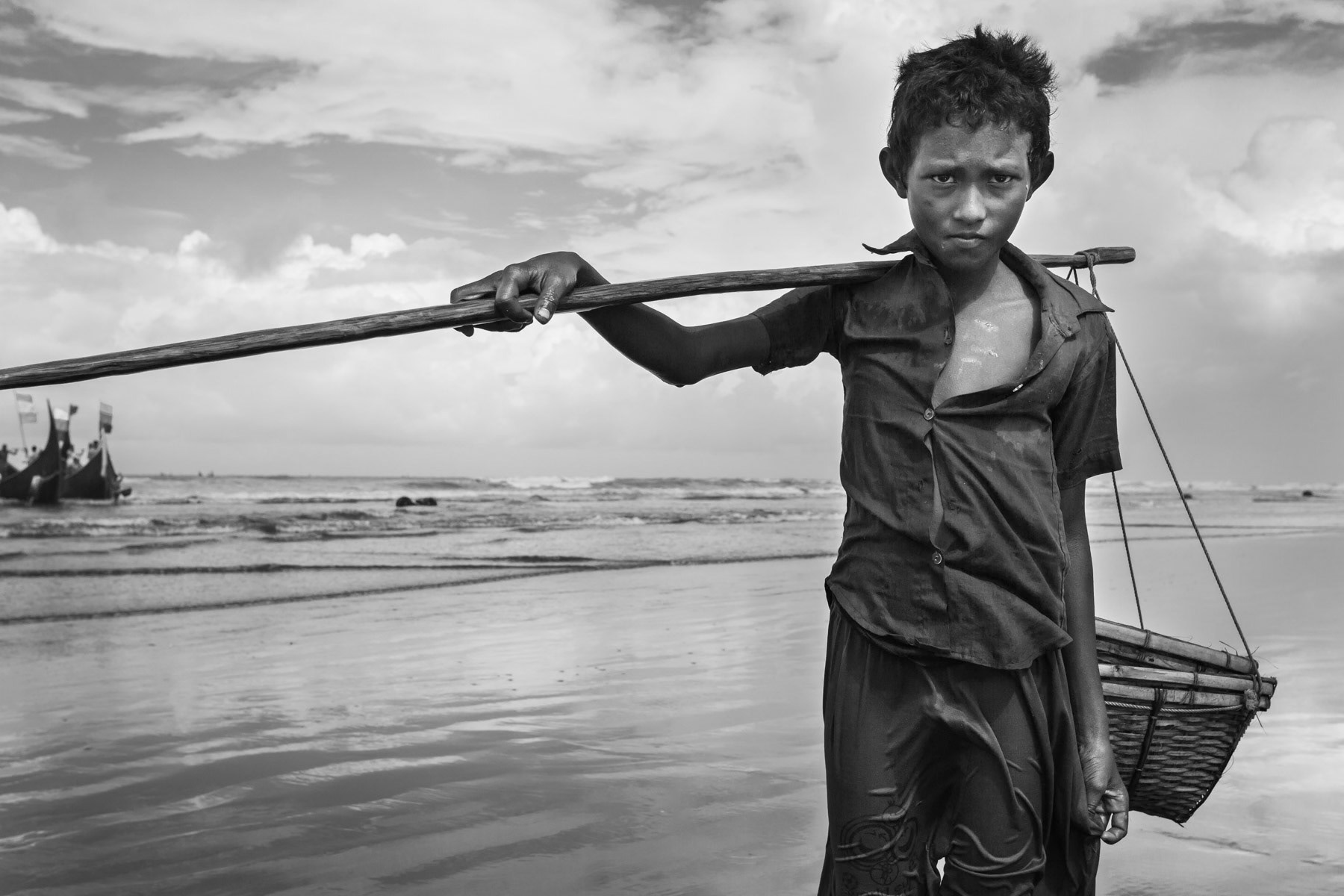
Rohingya refugee working as underpaid daily labour for Bangladeshi fishing boat owners. Shamplapur, Bangladesh, June 2015

Rohingya refugees at an informal coranic school. Medresas are usually the only from of education that un-registered refugees have. Teknaf, Bangladesh, June 2015

Locked up Rohingya man near a military check point in Aung Mingalar, detained for not respecting the curefew. Aung Mingalar is the sole remaining neighbourhood in Sittwe where around 4,500 Rohingya live in a sealed-off ghetto without any freedom of movement out of it. Sittwe, Myanmar, September 2015
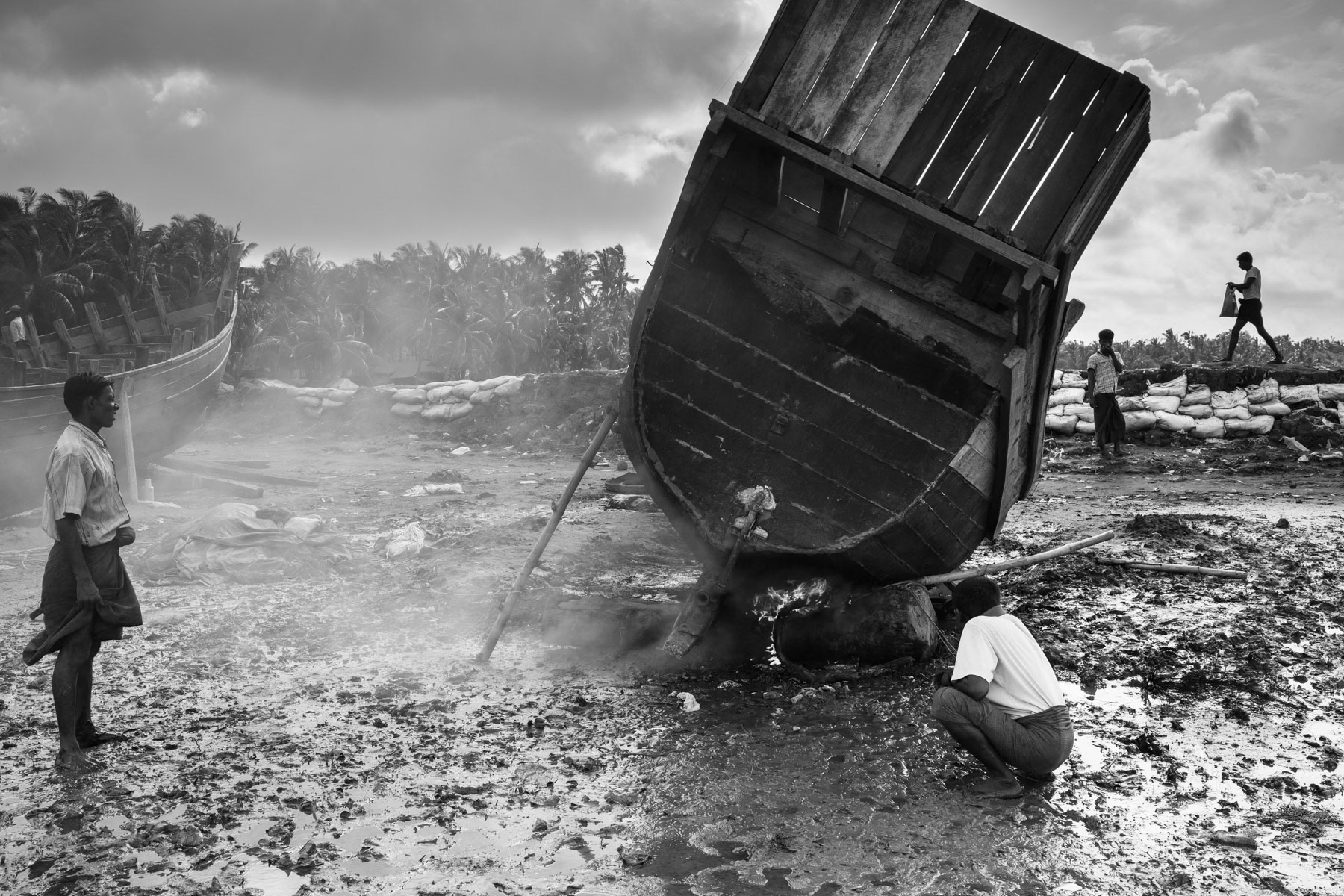
Rohingya fishermen repairing a boat, Thau Chaung village near Sittwe, Myanmar, September 2015
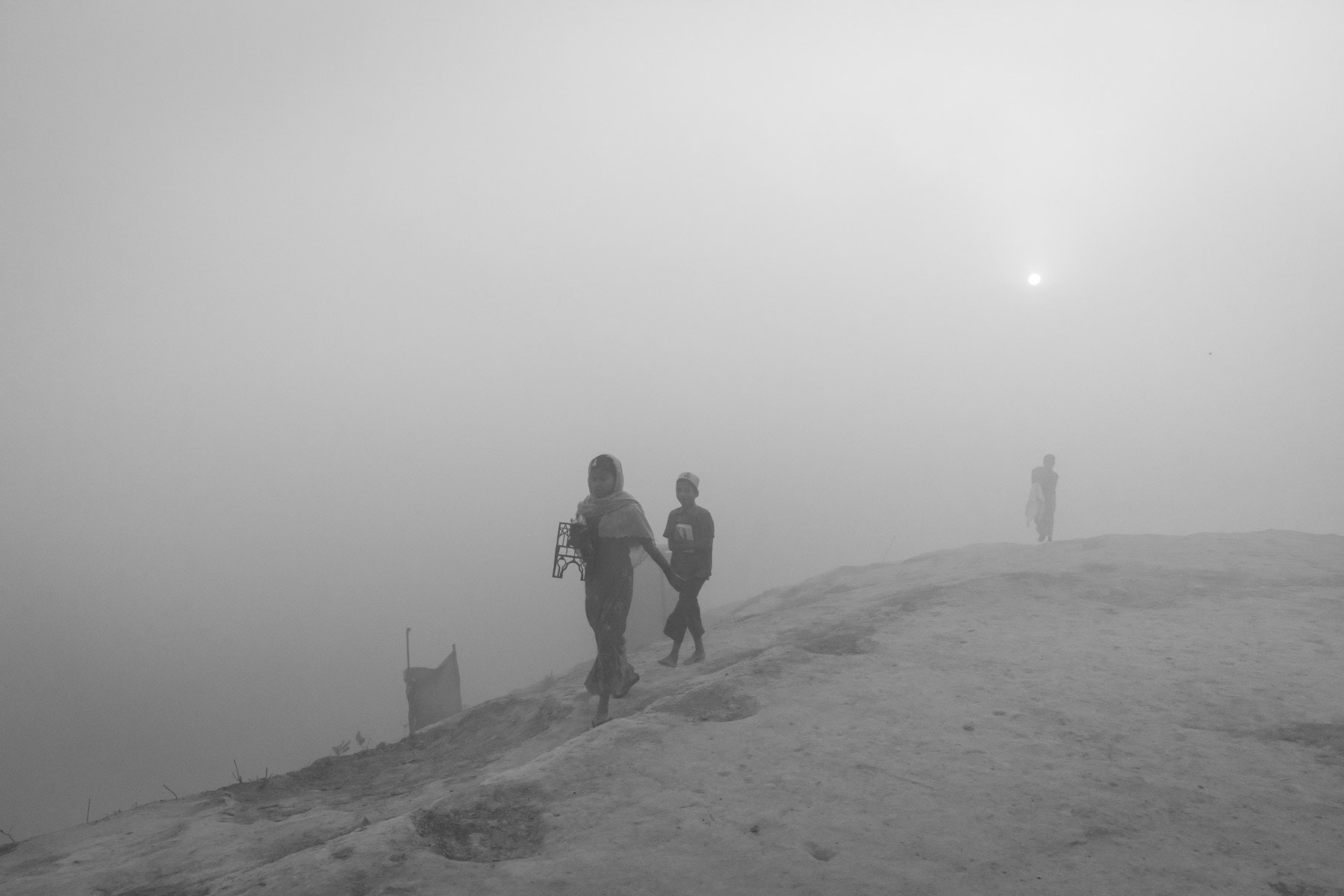
Rohingya children on the way to the medressa during the early morning hours. Thangkhali refugee camp, Ukhiya, Bangladesh, March 2018

Dar Paing camp for internally displaced Rohingya, established in 2012 after the waves of inter community violence in Rakhine State. Although called IDP camps, the population has been forcibly moved in them and have no possibility of leaving them, creating de-facto open air prisons. Sittwe township, Myanmar, September 2015.

Rohingya refugee community of Cox's Bazar, living between the beach and flood prone areas of the city. Najirar Tak, Cox's Bazar, Bangladesh, December 2015

Balukhali refugee camp for newly arrived Rohingya, nearly one million Rohingya have fled persecution and brutal ethnic cleansing campaigns carried out by the military since October 2016. Ukhiya, Bangladesh, March 2018

The apartheid train under heavy guard running through the IDP camps outside Sittwe. The train has ceased to operate since the last waves of violence in October 2016 and August 2017. Rakhine State, Myanmar, June 2016

Aung Mingalar, transformed into a ghetto for the 4000 remaining Rohingya in Sittwe. Rakhine, Myanmar, June 2016

Two years after Myanmar's military brutal campaign against the Rohingya, which led to the exodus of more than 750,000 people and sustained accusations of genocide, an important number estimated between 500 and 700,000 stayed behind in Rakhine. Mainly concentrated around Sittwe and other townships in central and southern Rakhine. Their situation is becoming worse since hamanitarian aid is severely restricted, a new ethnic conflict has erupted in Rakhine and the attention of aid agencies have been mainly focussing on the Rohingya that fled to Bangladesh in 2017. Their movements are further severely restricted allowing them to circulate within the camps and surrounding Rohingya villages. A train that passes through the villages and camps twice a day remains the only affordable transport between the IDP camps on the outskirts of Sittwe, the capital of Rakhine. Rohingya villagers travelling by train to the IDP camps where 130,000 Rohingya have forcibly be settled since 2012. Sittwe township, Rakhine, Myanmar, September 2019

One of the accesses to the fully sealed off Rohingya gettho of Aung Mingalar in Sittwe. The Rohingya population is not allowed to leave that part of town since the inter ethnic violence of 2012 and live in a de-facto concentration camp. The State capital of Rakhine, Sittwe, Myanmar, June 2016

Rohingya girl in Dar Paing camp for internally displaced persons, Sittwe township, Myanmar, September 2015

Hasina, 37, a Rohingya refugee from a village near Maungdaw in Myanmar. Her village was attacked by the Myanmar military during the first so called security operations in October 2016. During the attack her husband and two sons of 9 and 13 years were massacred. She arrived with her 4 surviving children in Bangladesh in October 2016. Rohingya refugee camp Kutupalong section II, Cox's Bazar, Bangladesh, October 2018

Mohammad Idris, 10 years old from Reskinapara near Maungdaw. He was hit in the head by a lost bullet when the village was attacked. He escaped to Bangladesh with his brother, sisters and parents. Nobody of his family got injured except him. He was for 2 months in hospital after reaching Bangladesh. Lambashiya, Kutupalong, Bangladesh, March 2018
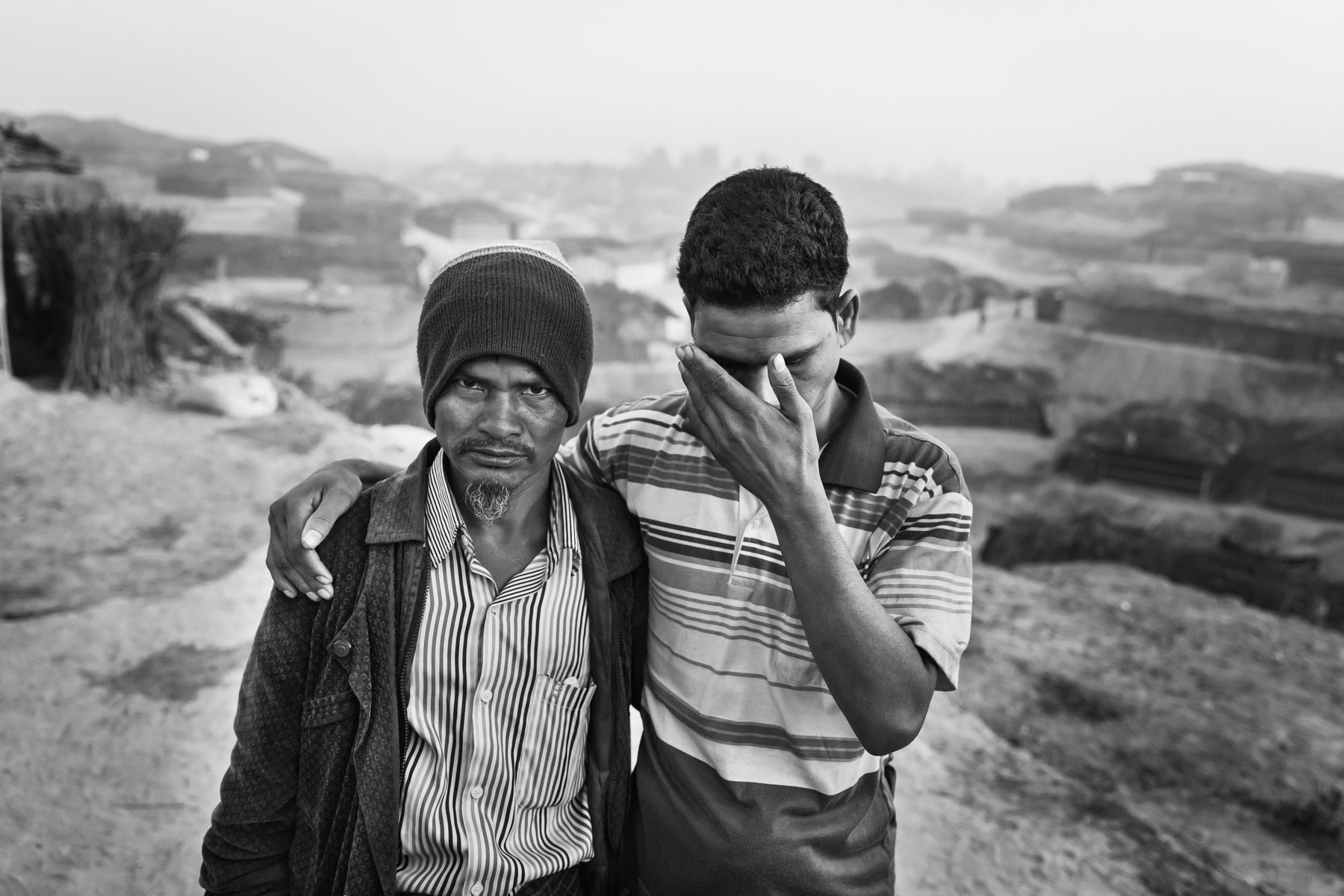
Persecuted Rohingya refugees that have recently arrived in Bangladesh from Myanmar. Two brothers fled together after one was hit by a shrapnel in the head while their village was under attack by the Myanmar military. He became blind as a result of the injury. Kutupalong refugee camp for un-registered new arrivals, Kutupalong, Bangladesh, February 2017
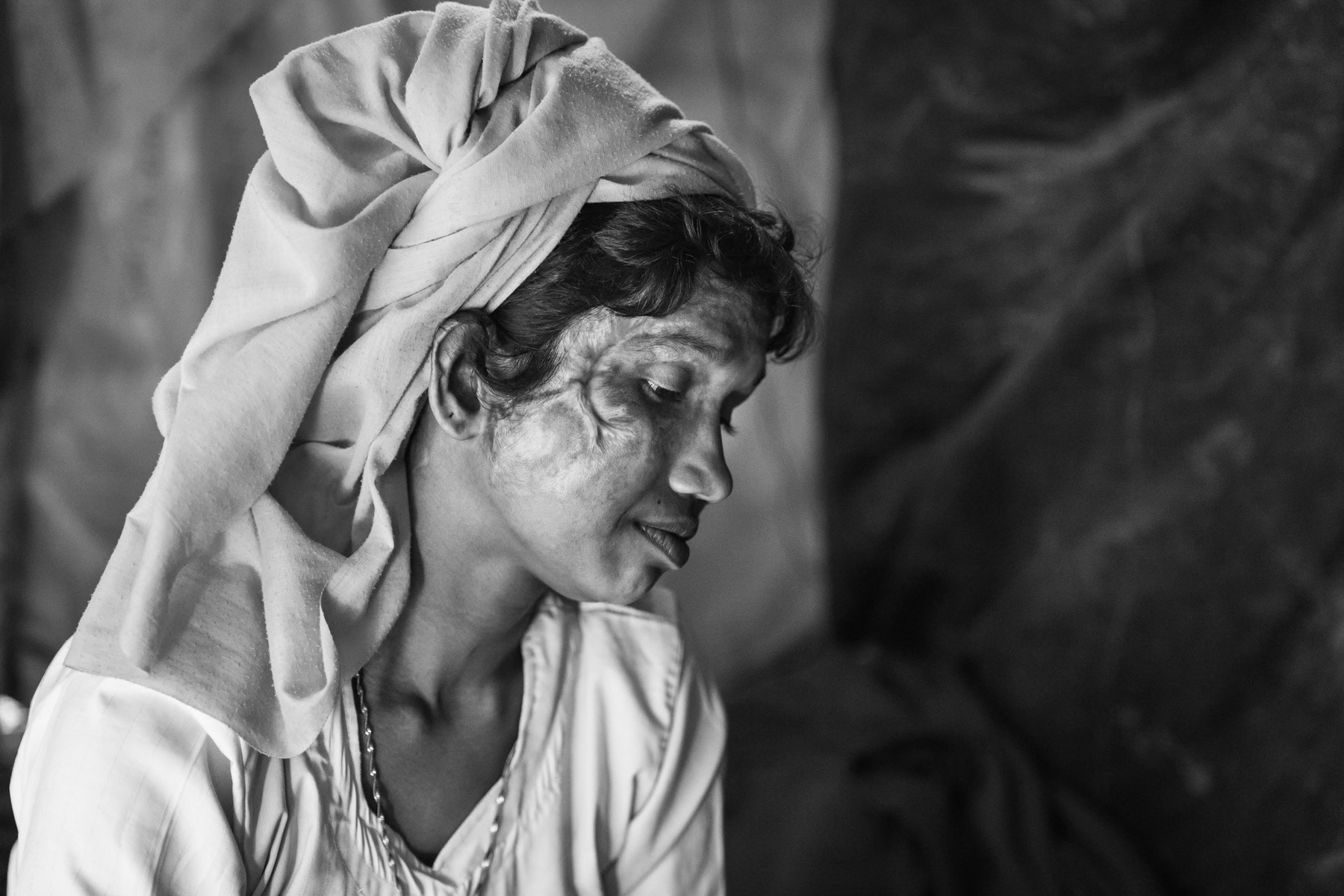
Momtaj Begum, 30 years old and her sole surviving child, Ruziya, 7 years old from Tula Tuli village in Maungdaw township. Tula Tuli village was attacked by Myanmar military forces on 30 August 2017 and survivors have witnessed extreme atrocities committed by military forces that international human rights groups have called brutal ethnic cleansing with possible genocidal intent. Momtaj Begum had 3 of her four children and husband executed and decapitated in front of her. She was consequently raped in front of her sole surviving daughter who was assaulted with a machette and left for dead. After the rape and the killings the house was locked by the military and set a blaze. She managed to escape with her daughther who had severe head wounds through the back door, while the military stayed in front of the burning houses. Doing so she was severely burned on more than 80% of her body, her daughter has several machette wounds on her skull. They arrived 5 days later in Bangladesh where she stayed one month in the MSF hospital. Her husband and 3 other boy children of 9,11 and 12 years were all burned in the house after being killed. Since our last meeting in November, they continue to struggle and to suffer as a result of the wounds and trauma. Going to the clinic to get care is challanging as it take 1$ for the trip and queues of more than one day. Also to collect the food rations she has to send her daughter as she has difficulties to walk. Her only surviving daughter has further head aches as a result of the machette wounds to her skull. Balukhali refugee camp in Bangladesh, March 2018

Rohingya women that fled ten days earlier from their village north of Maungdaw in Myanmar. One of the women gave birth to twins while escapting through the jungle. Their husbands have been killed during the military security operations that started in October 2016 in northern Rakhine near the border with Bangladesh. Human rights groups have classified the security sweeps as ethnic cleansing campaigns. Balukhali camp for newly arrived refugees, Bangladesh, February 2017

Azida Bibi, 6 years old Rohingya refugee from Sanifara near Maungdaw in Myanmar. She was snatched in her village on 1 September 2017 by Burmese military and forced to drink battery acid. Ever since she has lost more than half her weight as she can't digest any food and is vomitting constantly. She fled immediately after the attack to Bangladesh where she is being treated in a clinic. An estimated 650,000 Rohingya have fled persecution since August 2017 and a widespread security operation carried out by the Myanmar military. Human Rights groups and the UN have called those operations ethnic cleansing campaigns evolving into genocide. Balukhali refugee camp, Cox's Bazar, Bangladesh, November 2017

Moria Khatun's first son and her new born son from Maungdaw township in Myanmar. His mother was tortured, blindfolded, tightened and gang raped for 4 hours by military and local Rakhine. After the military left the village, her husband who was hiding in the jungle, came to evacuate them. Nuru Hafez the little baby boy was born in June 2018 nine months after his mother had been raped. Balukhali refugee camp in Bangladesh, October 2018

Rape victim, Sufia Khatun and her son from Chut Pyin, Rathedaung. She has 3 daughters, one daughter of 14 was gang raped and killed in front of her in the same room where she was raped, by military and local Rakhine which she can identify by name. She has 5 sons that were saved along with 2 of her younger daughters. Her husband was decapitated in front of them. She was gang-raped for a couple of hours by military and local mobs. The main local Rakhine rapists and killers were identified by her by their voice as she was blindfolded and tight while being raped and beaten. She was let go after giving all her gold jewellery and the equivalent of 500 usd in local currency. Two of her brothers and her sister in law were also massacred. Chut Pyin village is one of the numerous Rohingya villages that have been totally wiped out and where severe acts of ethnic cleansing with genocidal intend have been committed by the military and local mobs. Hundreds of Rohingya have been massacred in this village alone. Tangkhali camp, Bangladesh, March 2018

Baw Du Pha internment camp for forcibly displaced Rohingya. Sittwe township in Rakhine, Myanmar, October 2016

Jamtoli refugee camp with the mountains of Myamnar in the background. More than ¾ of a million Rohingya have fled ethnic cleansing and genocide from neighbouring Myanmar. Southern Bangladesh, October 2018

A Rohingya refugee carrying water from one of the few tube wells in the refugee camp for new arrivals. More than 650,000 Rohingya refugees have arrived in Bangladesh since August 2017. Thangkhali refugee camp, Bangladesh, March 2018

Rohingya villagers returning from the fields, Paktauw township in Rakhine, Myanmar, May 2017
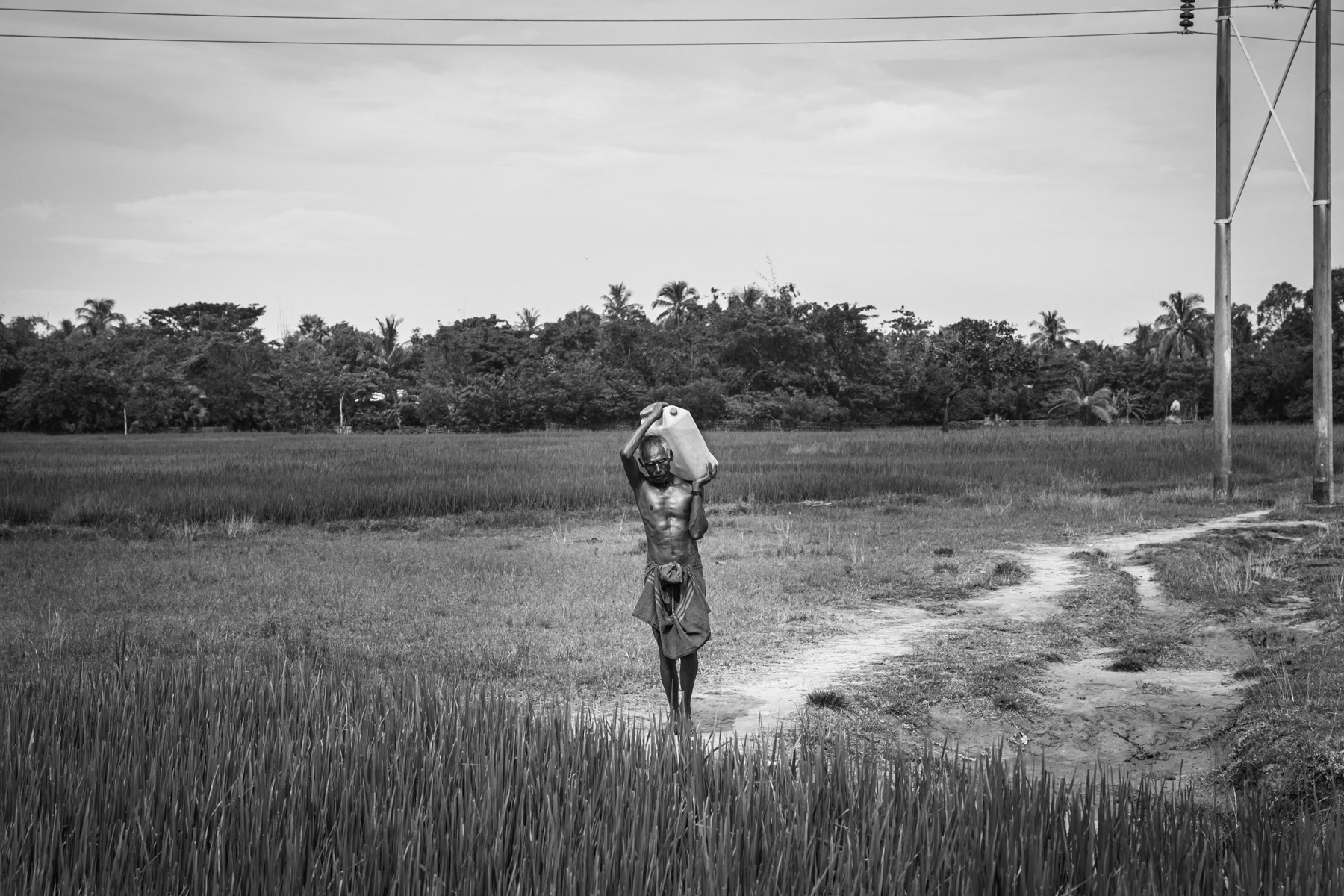
A Rohingya man carrying water to his village in Sittwe township. Movements between Rohingya villages and the camps are severely restricted and are completely sealed off from Sittwe town. Rakhine State, Sittwe township, September 2019
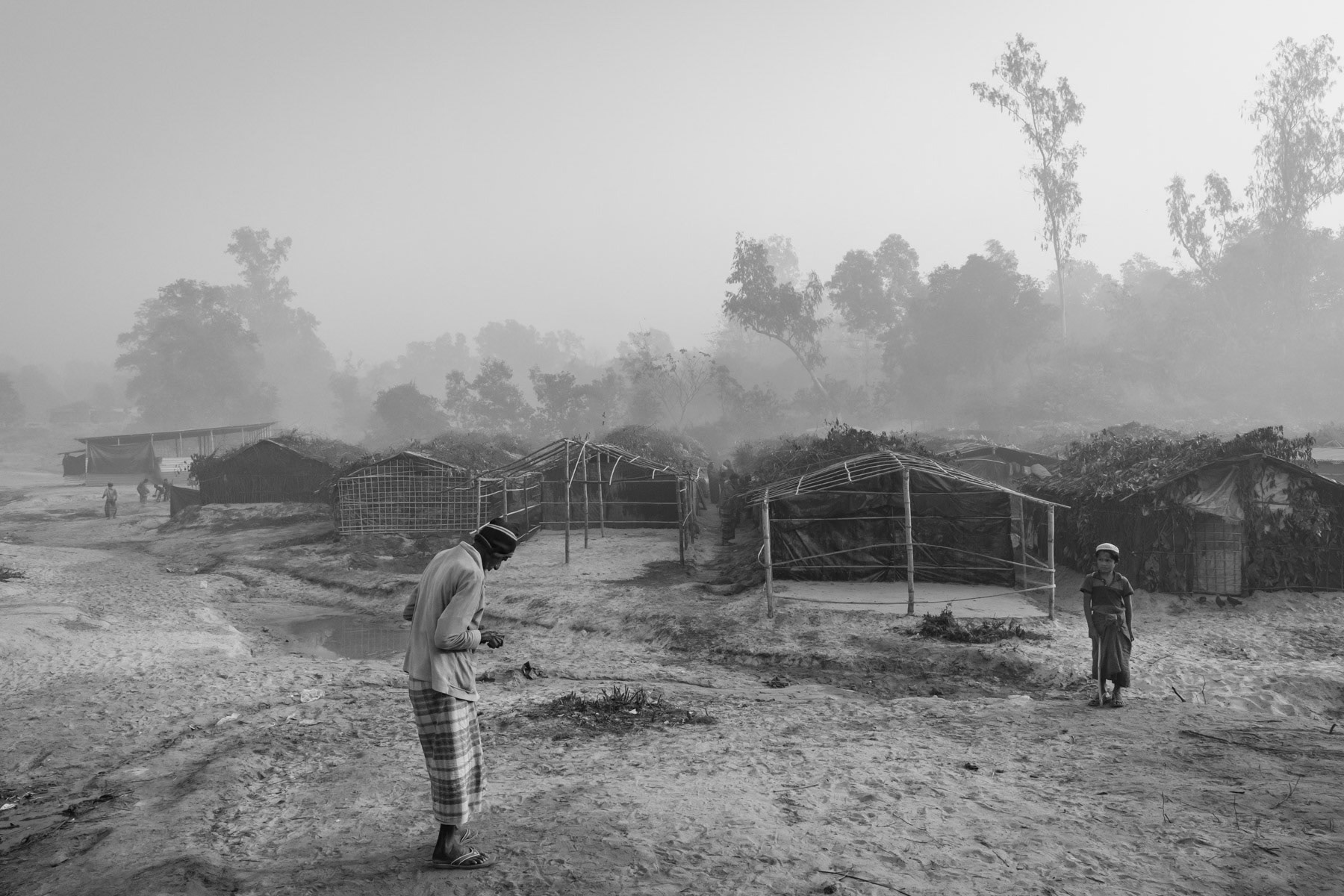
Newly built shelters at a new camp established to cope with a part of the 80,000 Rohingya that have fled northern Maungdaw township in Myanmar since the begining of the robust security crackdown in October 2016. Balukhali camp, Cox's Bazar, Bangladesh, February 2017

A typical makeshift shelter where several families would find refuge. The shelters are extremely vulnerable during monsoon and cyclone season. Balukhali camp for Rohingya refugees fleeing persecution in Myanmar, Cox's Bazar, Bangladesh, May 2017

New makeshift blocks for the newly arrived Rohingya refugees from Myanmar. More than 650,000 refugees have fled persecution in neighbouring Myanmar since August 2017. Lambashiya section of Kutupalong refugee camp, Ukhiya, Bangladesh, November 2017

Rohingya refugees at an informal coranic school, Teknaf, Bangladesh, June 2015

A new extension of the already huge Kutupalong refugee camp to shelter a part of the 650,000 newly arrived Rohingya refugees. Kutupalong camp is now sheltering Rohingya victims of the 1978, 1992, 2008, 2012, 2016 and 2017 ethnic cleansing campaigns. By the end of 2017 nearly one million Rohingya refugees live in Kutupalong, Bangladesh, November 2017

Makeshift camp near Teknaf housing un-registered Rohingya, East Nayapara, Shamlapur, Bangladesh, June 2015

Rohingya fishermen working as daily labour for Bangladeshi boat owners, Shamplapur, Bangladesh, June 2015





